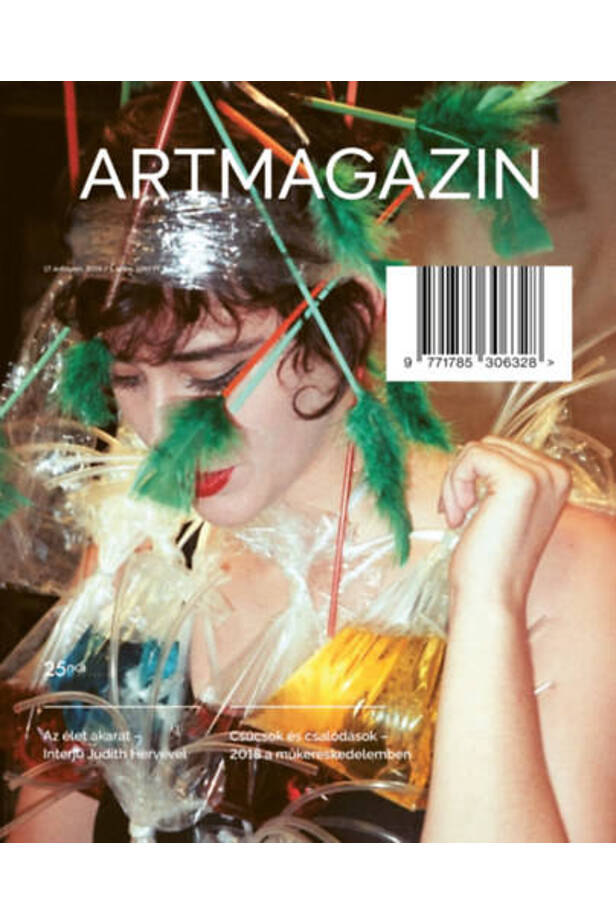Artmagazin 112 - 2019/1.
Delivery time: 2 - 3 business days
Quantity:
HUF 1,190
Description
Artmagazin's articles are published in the field of contemporary and classical art, focusing on Hungarian and international events, research, trends and trends. Our interest extends to border areas: fashion and design are as much a topic here as the connection points between theater, architecture and music. ARTMAGAZINE 112. Everything has become more convenient with us: from now on we can fit in mailboxes and handbags, and instead of 64, you can read about everything that happens in the exhibition halls at home and in the world, or just outside them, but definitely in connection with some artistic activity. In this issue, we begin by continuing a tradition of several years of what auction records were set in the past year - what came under the hammer from, say, the Rockefeller Collection or the Hungarian neo-avant-garde. Then there will be an exhibition showing the new ways of photography in Győr, and then you can read an interview with Judith Herve, who selected photo pairs from her husband's and son's legacy to find out what the new generation has changed from the old. Our cover photo is a photo of Rodolf Hervé, in which we can see a model wearing a King Tamás dress, which vividly confirms the recollections that the end of the eighties and the beginning of the nineties was a period of freedom and escaped creativity in Hungary. Afterwards, the topic is Lajos Vajda, so that the statements concerning his art and identity can be rethought on the basis of the exhibition now on display in Szentendre. Another article deals with it; how his relationship with Dezső Korniss developed, and how their perceptions changed over time, also in relation to each other. Our subsequent interview is actually a guided tour that interprets the latest exhibition at the Ferenc Hopp Museum of Asian Art; how the two concrete performances of Tibor Hajas show the concepts of the Tibetan religion, and how they were able to influence the Hungarian subcultural environment. After the ability to develop internal heat and the act of self-liquidation, the Vienna exhibition, which deals with how to determine, even from the point of view of advertising: what is beautiful, seems to be a huge leap. What do most people think of it? We can vote on this in Vienna. But if we are already in Vienna, we also offer another exhibition from there, Kolo Moser, the great figure of the so-called Wiener Werkstatte, full of "more beautiful" geometric Art Nouveau objects. We will also visit a villa next to Lake Garda to see what environment Gabriele D'Annunzio, the Italian canvas poet, and even a brief warlord, a fan of Wagner and Nietzsche, a sexualizer of St. Sebastian, etc., has built around him. Finally, a block of socialism: let’s look at the role Dürer Hall played in the heyday of graphics in the 1960s, and we may be confronted with Bortnyik’s “modernized” classic, a Mona Lisa from the sixties with puffy hair and strong eye contours. But I think Bortnyik sensed the extent of the later change in the image of women - life proved her, Mona Lisa is more like Nina Hagen than Hédi Váradi, who is harmless with her ruffled hair. CONTENTS ARTANZIX Art Trade Gábor Martos: TOPS AND DISAPPOINTMENTS 2018 in the art trade A picture (series) Lépold Zsanett: MEETING BOTTLES AND THEIR DESIGN The Vajda Paradigm Micro-history Emőke Gréczi: THE FATE OF PAINTERS IN A GROUP AND IN TIME Micro-history with Korniss and Vojvodina Interview with Renáta Szikra - Tünde Topor: CLEAN EARTH, CLEAN LIGHT Sagmeister & Walsh: Beauty Memorial Luca Keserű: THE WING GENIUS OF VITTOREALE Gabriele D'Annunzio in situ Design József Vadas: THE THOUSANDER Kolo Moser and an de siécle Graphics Révész Emese: HOME OF GRAPHICS Gem Sándor Bortnyik: Mona Lisa in the XX. century, 1961
| publisher | Artmagazin Kft. |
|---|---|
| scope | 79 |
| volume unit | oldal |
| ISBN | 9771785306328 |
| year of publication | 2019 |
| binding | pur adhesive bonding |


